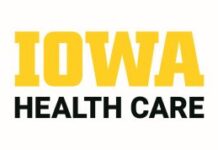CORRIDOR – Corridor business owners are more optimistic about the local economy and their own businesses according to the results of the latest Corridor Poll survey.
The figures are the result of an exclusive, in-depth research partnership between the Corridor Business Journal and Vernon Research Group. The poll is a multi-question survey conducted by Vernon researchers, who asked about 600 business owners and nonprofit directors from a broad representation of sectors and sizes about their companies and organizations.
Poll results were shared at the Corridor Business Journal’s Fastest Companies breakfast last week by Monica Vernon.
The highlight of the poll is the Corridor Poll Index (CPI), something that measures the optimism or pessimism of business owners regarding their perception of their company and the Corridor’s economy. This quarter’s CPI is 62.65.
That reflects a large increase in overall confidence, according to Vernon. The CPI for the fourth quarter of 2009 was 58.96. The previous high was the second quarter of 2009, when the CPI was 61.14.
As with past quarters, when asked to respond on a scale of one to 100 where one was entirely pessimistic and 100 was entirely optimistic, respondents were more confident in their own businesses than the economy overall. In Linn County, respondents had a rating of 75.34 when considering optimism about their own business, but only 62.65 regarding the local economy.
In Johnson County optimism about the respondent’s own business was 75.88, while only 65.87 when considering the local economy.
Though all the figures were up from last quarter, they should an interesting split. In Linn County, the optimism about the local economy was up about 3 percent over last quarter, while optimism about respondent’s own businesses was up 8 percent. In contrast, Johnson County respondents’ optimism about the local economy grew at a greater pace, up 7 percent, than that for their own business, which was up only 3 percent.
Looking in more detail drawn from the survey, compensation and benefits are rising slowly, with 17 percent of companies reporting an increase compared to 14 percent in the previous quarter. Nineteen percent of respondents expect compensation and benefits to increase in the next quarter.
In terms of headcount, 17 percent of respondents cut full-time and part-time help in the last quarter, while 21 percent increased it. Looking forward, 10 percent plan further cuts in the coming quarter, while 27 percent expect to add staff.
Respondents report that revenue is expected to improve slightly. For the last quarter, 37 percent said revenue/donations had been reduced, while 33 percent said they had increased. For the coming quarter, only 10 percent foresee further cuts, while 34 percent said they think they will have more revenue/donations.
For the quarter ahead, respondents anticipate some growth in the demand for goods and services. The largest jump is forecasted in local markets, with 44 percent expecting to see an increase. Regional markets also could be strong, with 38 percent seeing an increase there.
Looking at the data on an industry-by-industry basis, financial, accounting and legal experienced the most growth in the past quarter, followed by government and human services, food and entertainment and consulting, marketing and media.
For the coming quarter, construction, real estate and property management leaps from the lowest growth rate last quarter to that with the highest anticipated growth in the next. Retail, wholesale and manufacturing and engineering, architecture and design also show considerable potential in the coming quarter.
Looking at all respondents, in answer to about their company’s rate of growth so far in 2010, most said 46 percent said “steady but upward,” while 16 percent said “steady but declining.” A handful reported rapid movement in either direction, with 3 percent saying they were growing rapidly and 2 percent saying they were declining rapidly.
Looking back, 42 percent of respondents said their business is more successful overall than one to two years ago. Another 39 percent said they were about the same, while 16 percent said they were less successful overall.




